Australia is a land of dreams. From the sacred legends of the aboriginal Dreamtime when the great spirits conjured the coral reefs, rainforests, and scorched, red deserts, to armchair travelers who describe Australia as their dream destination, the Land Down Under deserves all the hype. The world's smallest continent and largest island, Australia is almost the same size as the United States, but with a population the size of New York State and some of the quirkiest wildlife on the planet.
Australia is also a land of staggering contrast and spectacular beauty. Along the coast, visitors can explore vibrant multicultural cities, safari across vast sand islands, trek through ancient rainforests, and dive the Great Barrier Reef. In the Outback, rugged national parks and red-earthed deserts offer the ultimate in adventure travel. Top it all off with a laidback feel and friendly people and it's no wonder Australia scores top billing on bucket lists around the world.
Australia is also a land of staggering contrast and spectacular beauty. Along the coast, visitors can explore vibrant multicultural cities, safari across vast sand islands, trek through ancient rainforests, and dive the Great Barrier Reef. In the Outback, rugged national parks and red-earthed deserts offer the ultimate in adventure travel. Top it all off with a laidback feel and friendly people and it's no wonder Australia scores top billing on bucket lists around the world.
1 Sydney Opera House
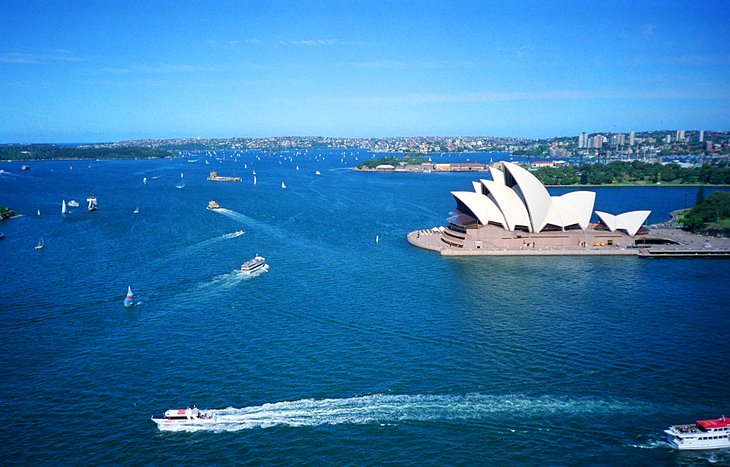
Sydney Opera House
Mention "Sydney, Australia" and most people think of the Opera House. Shaped like huge shells or billowing sails, this breathtaking building on Sydney's Bennelong Point graces the list of UNESCO World Heritage Sites and is one of the world's great architectural icons. The location is stunning. Water surrounds the structure on three sides and the Royal Botanic Gardens border it to the south. Danish architect, Jørn Utzon won an international competition for its design, but withdrew from the project after technical and financing problems. Construction was finally completed in 1973 at a cost ten times the original budget. By this time Utzon had left the country never returning to see his magnificent creation. Today visitors can enjoy a meal at one of the restaurants or take a tour of the building, which encompasses theatres, studios, a concert hall, exhibition rooms, and a cinema. But it's far more impressive viewed from a distance. One of the best sites to photograph the Opera House is Mrs Macquarie's Chair in the Royal Botanic Gardens or from aboard a harbor cruise.
2 Great Barrier Reef
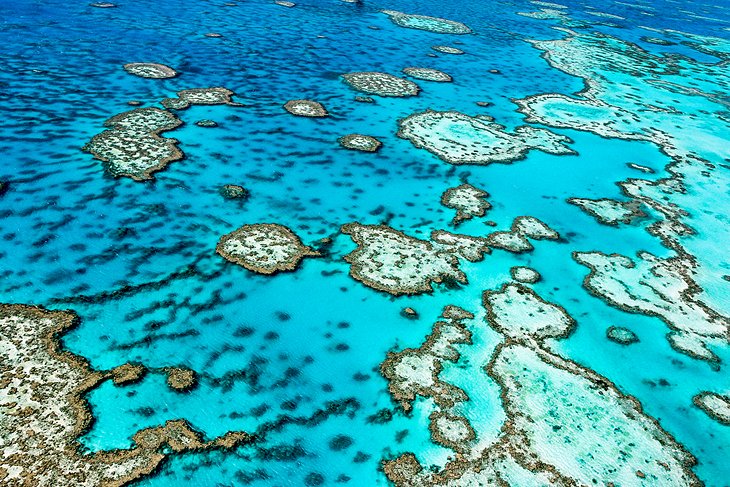
Great Barrier Reef
Visible from outer space, the World Heritage-listed Great Barrier Reef is one of the largest living structures on the planet. In 1975 the Great Barrier Reef Marine Park was established to protect its fragile ecosystems, which include more than 3,000 coral reefs; 600 continental islands, including the beautiful Whitsunday group; 300 coral cays; and inshore mangrove islands. One of the seven wonders of the natural world, the park stretches for 2,300 km along the state of Queensland, on Australia's east coast (that's about the distance between Mexico and Vancouver). Diving and snorkeling are spectacular. The astounding array of marine life includes soft and hard corals, more than 1,600 species of tropical fish, sharks, dugongs, dolphins, turtles, rays, and giant clams. Those who prefer to stay dry can view the reef from underwater viewing stations and glass bottom boats. On the mainland, Cairns, Port Douglas, and Airlie Beach are the main launching points for tours.
3 Uluru-Kata Tjuta National Park
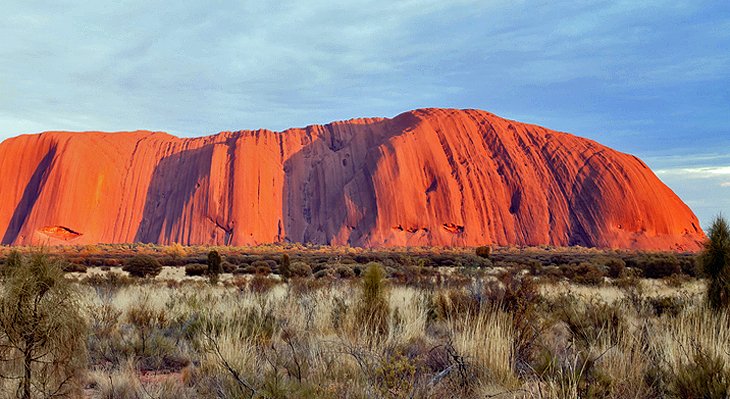
Uluru-Kata Tjuta National Park
4 Sydney Harbour Bridge
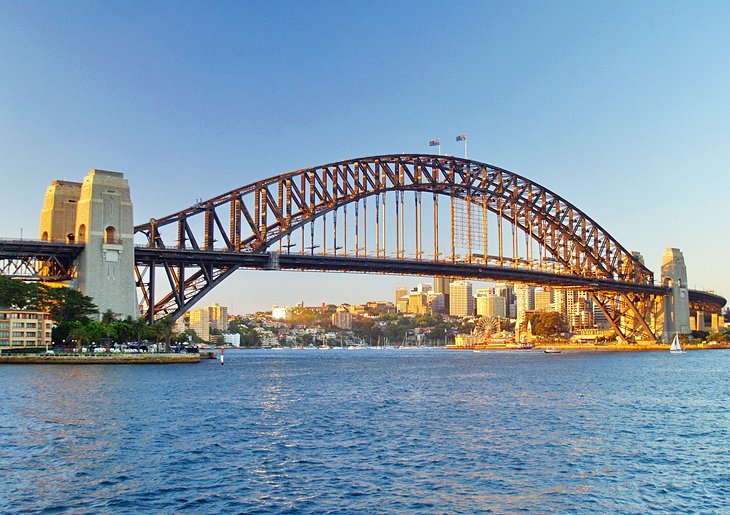
Sydney Harbour Bridge
Along with the Opera House, the Sydney Harbour Bridge is one of Australia's most famous icons. Affectionately called "the Coathanger", this impressive feat of construction is the largest steel arch bridge in the world. It was completed in 1932, 40 years before the Sydney Opera House. Rising 134 m above the harbor, the bridge spans 500 m connecting Sydney's north shore to the central business district. In addition to the pedestrian path, two railway lines extend over the bridge as well as eight lanes for road traffic, the direction of which can be switched to accommodate traffic flow.
One of the top things to do in Sydney is a guided ascent to the top of the bridge where visitors can enjoy spectacular views over the harbor and city. For an overview on the bridge's history and construction visit the museum in the southeastern pier. Interestingly, Paul Hogan, of Crocodile Dundee fame, worked as a painter on the bridge before rocketing to international stardom.
One of the top things to do in Sydney is a guided ascent to the top of the bridge where visitors can enjoy spectacular views over the harbor and city. For an overview on the bridge's history and construction visit the museum in the southeastern pier. Interestingly, Paul Hogan, of Crocodile Dundee fame, worked as a painter on the bridge before rocketing to international stardom.
5 Blue Mountains National Park
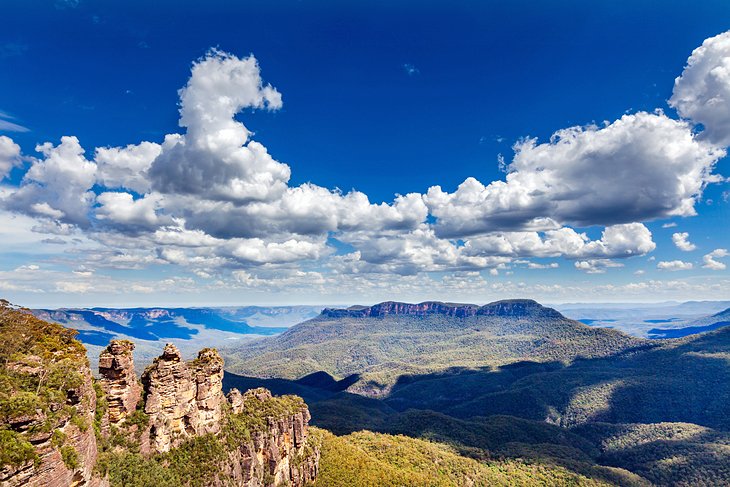
Blue Mountains National Park
A UNESCO World Heritage Site, beautiful Blue Mountains National Park lies 81 km west of Sydney and is a popular day trip from the city. Named for the blue haze emanating from the many eucalyptus trees, this stunning park protects more than 664,000 acres of bush land and encompasses dramatic gorges, waterfalls, aboriginal rock paintings, and 140 km of hiking trails. The most famous attractions in the park are the towering sandstone rock formations called the Three Sisters. Other highlights include the Katoomba Scenic Railway, the world's steepest, which whisks passengers down the Jamison Valley through a cliff side tunnel into an ancient rainforest. Hiking, abseiling, rock climbing, mountain biking, and horseback riding are all popular things to do in the park
6 Melbourne
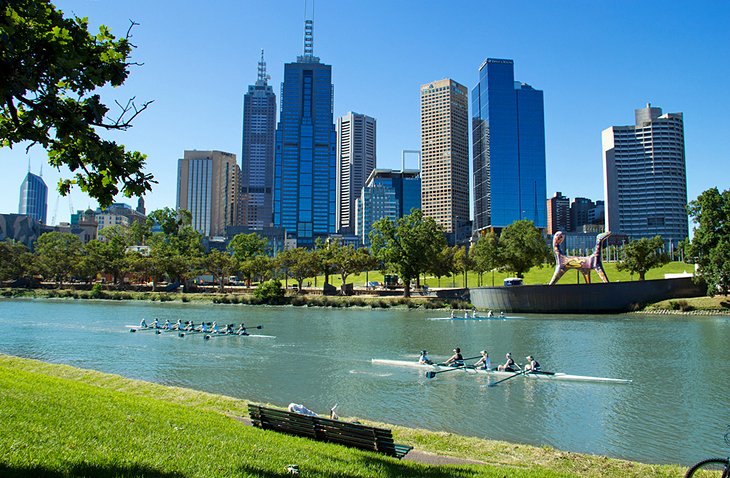
Melbourne
Melbourne, Australia's second largest city, is a popular stop on many Australia itineraries. Galleries, theaters, restaurants, shops, and a distinctly European feel are the main draws of this sophisticated city on the Yarra River. It's also a green city with parks, gardens, and open spaces occupying almost a third of its total area. Highlights of the city include the Royal Botanic Gardens, the National Gallery of Victoria, and the Melbourne Cricket Ground where sports fans can watch cricket in the summer and Australian Rules football in the winter. Shoppers flock to the elegant Royal Arcade on Bourke Street, as well as Chapel Street, the Melbourne Central Shopping Center, and the Queen Victoria Market, which has been selling fruits, vegetables, clothes, and crafts for more than a century. To the east, greater Melbourne extends into the beautiful Dandenong Ranges, and in the south to the Mornington Peninsula where many locals escape for seaside getaways.
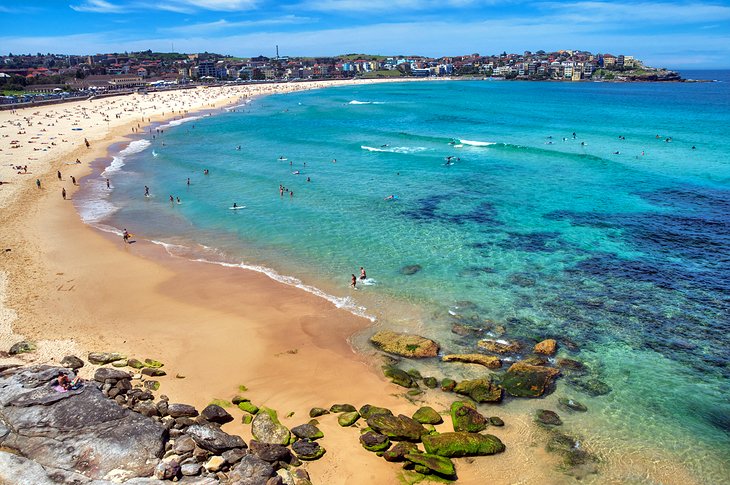
Bondi Beach
Bronzed bodies, blond sand, backpackers, and surf - throw it all together and you get one of the world's most famous beaches. Only 15 minutes by car from the city center, Bondi Beach is home to one of the oldest surf life-saving clubs in the world. It's also a great spot for a seaside stroll or picnic. The scenic Bondi to Bronte coastal walk begins at the southern end of the beach and follows the coastline for 6 km along sandstone cliffs. Shops, cafes, and restaurants lie across the street from this famous coastal strip, and the beach is a hotspot on Christmas Day and New Year's Eve. Tourists and locals alike visit the Sunday markets and frolic at the ocean pool and skate park. Strong rip tides often sweep unsuspecting swimmers out to sea, especially at the southern end of this kilometer-long strand, so swimmers should stay between the flags. There's a reason the Aussies made a reality TV show called "Bondi Rescue."
8 Daintree National Park
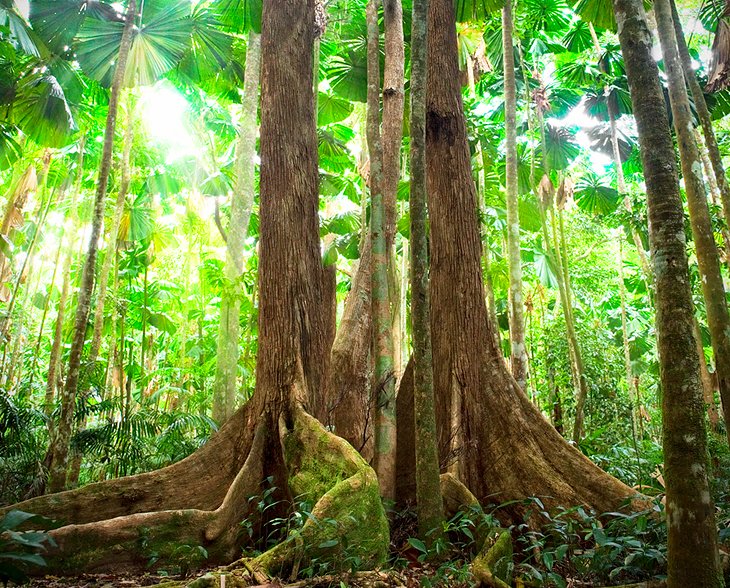
Daintree National Park
A Wet Tropics World Heritage Area, Daintree National Park in Far North Queensland is among the most ancient ecosystems on earth. The area belongs to the Eastern Kuku Yalanji Aboriginal people, and many of its natural features hold great spiritual significance. The park encompasses two main sections: Mossman Gorge where crystal clear waters gush over granite boulders, and Cape Tribulation where rainforest meets reef along the white sandy beaches of the Coral Sea. The stunning stretch of coast is one of the few places in the world where two of the planet's richest ecosystems converge. The park's astounding biodiversity includes more than 18,000 plant species and a vast array of animal species including the cassowary, crocodile, giant blue Ulysses butterfly, and the secretive Bennett's tree kangaroo. The resort town of Port Douglas, just south of the park, is a great base to arrange wilderness safaris into the park.
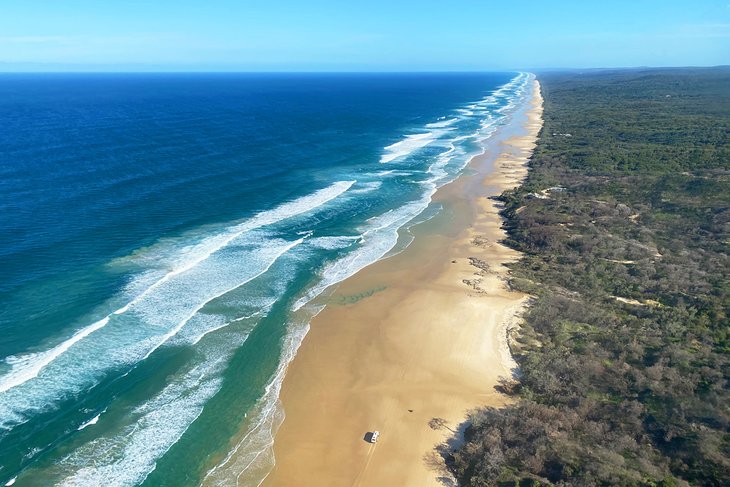
Fraser Island
World Heritage-listed Fraser Island, between Bundaberg and Brisbane off Australia's east coast, is the largest sand island in the world and one of Australia's most unique four-wheel-drive adventures. Along windswept Seventy Five Mile Beach, visitors can see the rusted hulls of shipwrecks, the colored sandstone cliffs of The Cathedrals, and the bubbling fish-filled rock pools called Champagne Pools.
Venturing inland, highlights include crystal clear freshwater creeks and lakes, some fed by springs, others perched amid towering sand dunes, and ancient rainforests filled with an amazing diversity of plants and animals. Sharks, dolphins, and whales prowl the waters and the island's fauna includes wild horses, dingoes, bats, sugar gliders, and more than 300 species of birds. Access to Fraser Island is by ferry from Rainbow Beach and Hervey Bay. Four-wheel drive vehicles are essential as the island has no sealed roads.
Venturing inland, highlights include crystal clear freshwater creeks and lakes, some fed by springs, others perched amid towering sand dunes, and ancient rainforests filled with an amazing diversity of plants and animals. Sharks, dolphins, and whales prowl the waters and the island's fauna includes wild horses, dingoes, bats, sugar gliders, and more than 300 species of birds. Access to Fraser Island is by ferry from Rainbow Beach and Hervey Bay. Four-wheel drive vehicles are essential as the island has no sealed roads.
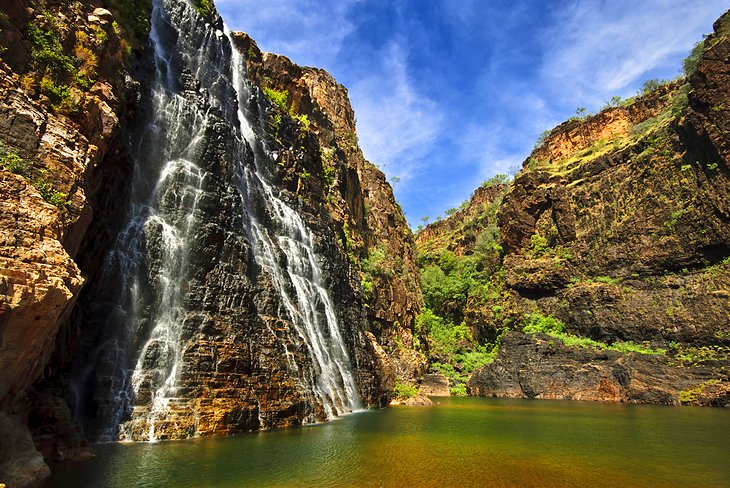
Kakadu National Park
Share:
Kakadu National Park, in the Top End or the Northern Territory, is a World Heritage Site and one of the planet's great wilderness areas. Covering more than 19,840 sq km, Kakadu is the largest national park in Australia and the second largest in the world. Within its borders lie monsoon rainforests, mangrove swamps, rivers, gorges, ancient rock paintings, wetlands, and waterfalls as well as an astounding diversity of wildlife. In addition to the many mammals and reptiles, more than 300 different species of birds make their home here, and visitors may spot saltwater crocodiles prowling the wetlands. Visitors can view the park's diverse ecosystems by car, air, on foot via the vast network of hiking trails, or by boat on the rivers or floodplains. During the wet season (Nov-April), many roads and attractions close due to heavy flooding.
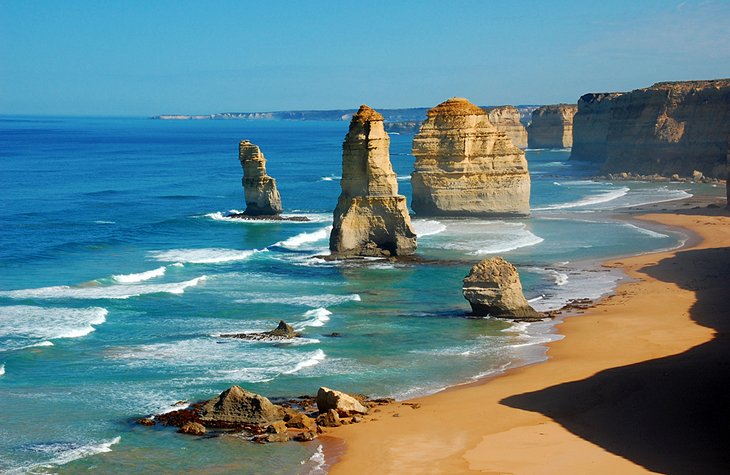
Great Ocean Road
Every top tourist destination has a spectacular drive, and for Australia it's the Great Ocean Road. Built to provide employment during the Depression, the road stretches for 300 km along Australia's southeast coast from the surfing town of Torquay to the town of Allansford, near Warrnambool in the state of Victoria. The top attraction along the road is the Port Campbell National Park with the wind and wave-sculpted rock formations known as the Twelve Apostles, London Bridge, the Arch, and Loch Ard Gorge. From a helicopter, these rock formations look like giant puzzle pieces lashed by the pounding surf of the Southern Ocean. Other highlights along the road include the popular holiday resort town of Lorne and Otway National Park, an area of dense eucalyptus forest, fern-filled rainforest, hiking trails, and waterfalls.
12 Broome and the Kimberley region
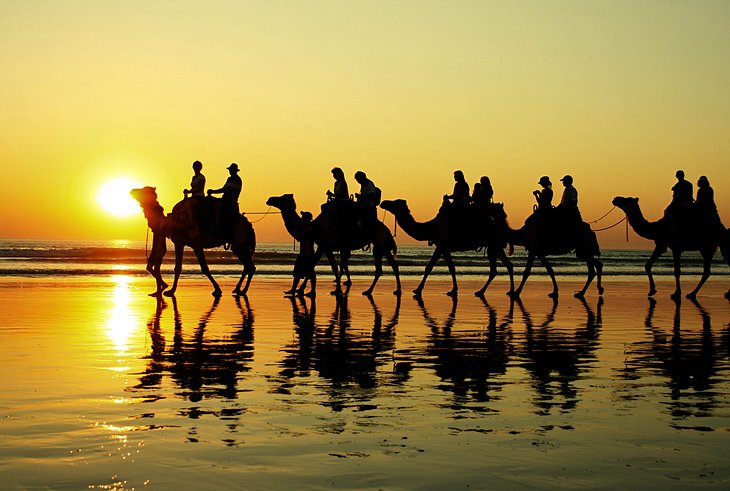
Broome and the Kimberley region
Source By: http://www.planetware.com/tourist-attractions/australia-aus.htm











Thanks for the information you shared a good piece of work, If you can share on this airport parking deals UK, meet and greet Gatwick system topic because I need the information about it. Thanks in advance.
ReplyDeleteNice post. Such an informative article. Hard to find on internet. You can get more information about Hotels in Blackpool.
ReplyDelete